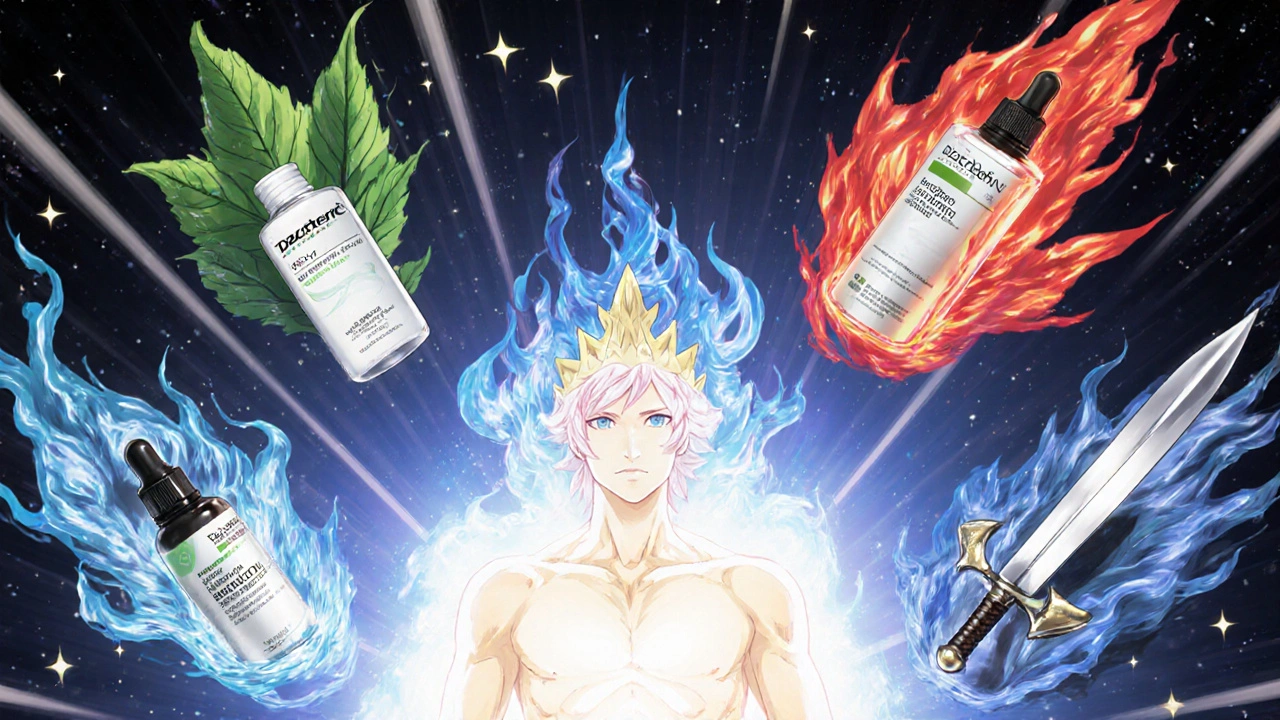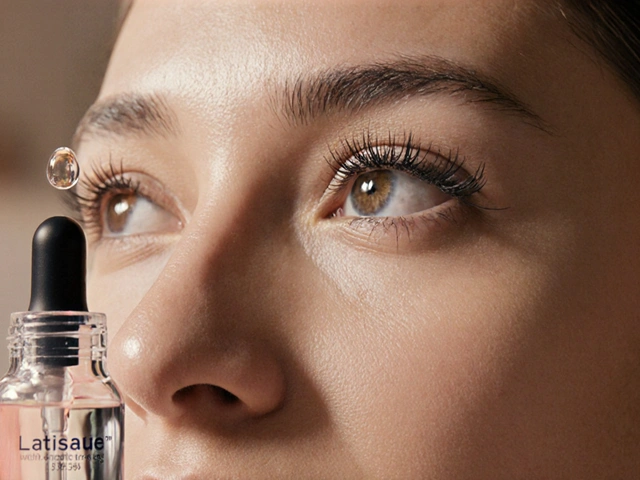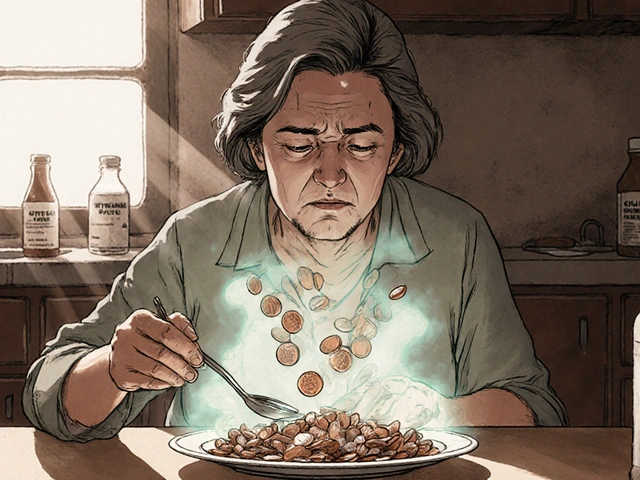Retino A Cream 0.025 is one of the most commonly prescribed topical treatments for acne, fine lines, and sun-damaged skin. It contains tretinoin, a form of vitamin A that speeds up skin cell turnover. But it’s not the only option on the shelf. If you’ve tried Retino A and found it too drying, too expensive, or just not working well enough, you’re not alone. Many people switch to alternatives - some prescription, some over-the-counter - and get better results. Here’s how Retino A 0.025 stacks up against the most popular alternatives, based on real-world use, dermatologist feedback, and patient reports from the UK and beyond.
What Retino A Cream 0.025 Actually Does
Retino A Cream 0.025 is a prescription-strength retinoid. That means it’s not just a moisturizer with a fancy ingredient. Tretinoin works by forcing your skin to shed dead cells faster and replace them with new ones. This clears clogged pores (great for acne), fades dark spots from sun damage, and reduces fine lines over time. It’s been studied since the 1970s, and it’s still the gold standard. A 2023 review in the British Journal of Dermatology confirmed that 0.025% tretinoin improves acne by 50-70% after 12 weeks in most users.
But here’s the catch: it doesn’t work overnight. Most people see initial irritation - redness, peeling, burning - for the first 4-6 weeks. That’s normal, but it turns off a lot of users. And if you’re not using sunscreen daily, you’re undoing all the benefits. Sun exposure makes tretinoin less effective and increases risk of burns.
Alternative 1: Adapalene 0.1% (Differin Gel)
Adapalene is a newer retinoid, now available over-the-counter in the UK as Differin Gel. It’s gentler than tretinoin but still effective. Studies show it reduces acne lesions by about 60% after 12 weeks - slightly less than tretinoin, but with far fewer side effects. Many users report no irritation at all, especially if they start with a pea-sized amount every other night.
Why choose it? If you have sensitive skin, or you’re new to retinoids, Differin is the easiest on-ramp. It’s also cheaper than Retino A if you’re paying out-of-pocket. A 45g tube costs around £18-£22 in UK pharmacies. You can buy it without a prescription, which makes it more accessible.
Downside? It doesn’t work as well for deep wrinkles or severe sun damage. If your main goal is anti-aging, not acne, you’ll need something stronger.
Alternative 2: Tazarotene 0.05% (Tazorac)
Tazarotene is a prescription retinoid, stronger than tretinoin. It’s often used for stubborn acne and psoriasis, but dermatologists also prescribe it for photoaging. A 2022 clinical trial showed tazarotene improved skin texture and pigmentation better than tretinoin at 0.05% strength after 24 weeks.
But it’s harsher. About 40% of users report moderate to severe peeling and redness. It’s not a good first choice unless you’ve already tolerated tretinoin and still need more results. It’s also more expensive - around £35-£45 for a 30g tube on NHS prescription, or £60+ if bought privately.
Best for: People who’ve tried Retino A and saw improvement but want faster, deeper results. Not for beginners.
Alternative 3: Retinol (Over-the-Counter Options)
Retinol is the non-prescription cousin of tretinoin. It’s found in brands like The Ordinary, Paula’s Choice, and Boots No7. Retinol has to convert into retinoic acid (the active form) in your skin - and that conversion is inefficient. Only about 1% of applied retinol becomes active tretinoin.
That means you need higher concentrations. A 1% retinol serum might be as strong as 0.025% tretinoin, but it takes longer - often 3-6 months to see results. A 2021 study in the Journal of Clinical and Aesthetic Dermatology found that 1% retinol improved fine lines and pores, but only after 24 weeks of consistent use.
Pros: Gentle, widely available, affordable. A 30ml bottle of 1% retinol costs £10-£15.
Cons: Slow. Unpredictable. Some products are poorly formulated. If you’re looking for fast acne clearance or significant wrinkle reduction, retinol won’t cut it.

Alternative 4: Bakuchiol (Natural Alternative)
Bakuchiol is a plant extract from the Psoralea corylifolia seed. It’s marketed as a “natural retinol” and has gained popularity among people avoiding synthetic ingredients. A 2019 double-blind trial published in the British Journal of Dermatology found that 0.5% bakuchiol applied twice daily improved wrinkles and pigmentation as effectively as 0.025% tretinoin - but with significantly less irritation.
It’s not a retinoid, but it works on similar pathways. It’s safe during pregnancy (unlike tretinoin) and doesn’t increase sun sensitivity. Brands like Herbivore and The Inkey List offer bakuchiol serums for under £20.
Downsides? It’s slower than tretinoin. Doesn’t help with acne as much. If you have moderate to severe breakouts, bakuchiol won’t be enough.
Comparison Table: Retino A 0.025 vs Alternatives
| Product | Active Ingredient | Strength | Prescription Needed? | Time to Results | Side Effects | Price (UK) |
|---|---|---|---|---|---|---|
| Retino A Cream 0.025 | Tretinoin | 0.025% | Yes | 6-12 weeks | High (peeling, redness, dryness) | £25-£35 |
| Differin Gel | Adapalene | 0.1% | No | 8-16 weeks | Mild to moderate | £18-£22 |
| Tazorac Cream | Tazarotene | 0.05% | Yes | 4-10 weeks | Very high | £35-£60 |
| 1% Retinol Serum | Retinol | 1% | No | 12-24 weeks | Low to mild | £10-£15 |
| Bakuchiol Serum | Bakuchiol | 0.5-1% | No | 12-20 weeks | Very low | £15-£25 |
Who Should Stick With Retino A 0.025?
If you’ve tried other retinoids and your skin handled them well, Retino A is still the most reliable choice for fast, visible results. It’s especially effective if you have:
- Chronic acne that won’t clear with OTC products
- Visible sun damage - dark spots, rough texture
- Early signs of wrinkles around the eyes or mouth
But you need patience and discipline. Use it 2-3 nights a week at first. Always follow with a moisturiser. Never skip sunscreen. If you’re using it daily and still getting flaky, you’re overdoing it.

Who Should Switch?
Switch to Differin if:
- Your skin gets too irritated by Retino A
- You want to start retinoids without a prescription
- Your main concern is acne, not deep wrinkles
Switch to bakuchiol if:
- You’re pregnant or breastfeeding
- You prefer natural ingredients
- You have rosacea or very sensitive skin
Switch to tazarotene only if:
- You’ve used tretinoin for 6+ months with good results but want faster improvement
- Your dermatologist recommends it
Stick with retinol only if:
- You’re on a tight budget
- You’re using it as a maintenance product after stronger retinoids
- You’re okay waiting 6 months for results
What Most People Get Wrong
People think stronger = better. That’s not true. Using 0.1% tretinoin because you think it’ll work faster just leads to red, peeling skin and quitting. Start low. Go slow.
Another myth: you need to use it every night. Studies show that using tretinoin every other night gives nearly the same results as daily use - with half the irritation. That’s the secret most dermatologists don’t tell you.
And don’t mix it with vitamin C, AHA/BHA acids, or benzoyl peroxide right away. Layer them on different nights. Combining them too soon is the #1 reason people give up.
Final Thoughts
Retino A Cream 0.025 is powerful - but it’s not the only option. For many, Differin is a better starting point. For others, bakuchiol offers a gentler path with real results. Tazarotene is the heavy hitter, but it’s not for everyone. Retinol is fine if you’re patient.
The best choice isn’t about what’s strongest. It’s about what you can stick with. Skin care is a marathon, not a sprint. Pick the one that fits your skin, your lifestyle, and your goals - not the one with the loudest marketing.
Can I use Retino A Cream 0.025 while pregnant?
No. Tretinoin is classified as a Category C drug in pregnancy, meaning it may harm the fetus. Even topical use carries risk. If you’re pregnant or planning to be, switch to bakuchiol or consult your GP for safe alternatives.
How long does Retino A Cream 0.025 last once opened?
Most tubes last 6-8 months with regular use. Store it in a cool, dark place - like a bathroom cabinet away from the sink. Heat and light break down tretinoin. If the cream turns yellow or smells off, throw it out.
Can I buy Retino A Cream 0.025 online without a prescription?
Legally, no. Retino A is a prescription-only medicine in the UK. Sites selling it without a prescription are breaking the law and may sell fake or contaminated products. Always get it through a registered pharmacy or NHS prescription.
Does Retino A Cream 0.025 make your skin thinner?
No. That’s a common myth. Tretinoin actually thickens the deeper layers of skin (dermis) over time. It increases collagen production. What you feel is surface peeling - temporary and normal. Your skin gets stronger, not weaker.
What moisturiser should I use with Retino A?
Use a simple, fragrance-free moisturiser. Look for ingredients like ceramides, hyaluronic acid, or squalane. Avoid anything with alcohol, menthol, or essential oils. Brands like CeraVe, La Roche-Posay, and The Ordinary’s Natural Moisturising Factors work well.








Posts Comments
Caden Little November 1, 2025 AT 16:38
I started with Retino A and almost quit after week 2-my face looked like a pepperoni pizza. Switched to Differin and now I’m on month 6 with zero irritation and clear skin. No joke, this stuff is magic if you give it time. Also, use a pea-sized amount. Seriously, less is more.
Sebastian Brice November 2, 2025 AT 09:29
Wow, so you’re telling me the $35 prescription isn’t the ‘gold standard’… but the $18 OTC gel is? 🤔 I mean, I get it-pharma companies love to sell us expensive solutions when cheap ones work just fine. But let’s not pretend Differin isn’t just tretinoin’s chill cousin who never yells at anyone. Also, bakuchiol? Sounds like a spell from Harry Potter but hey, if it works without turning your face into a raisin, I’m all in.
Jim Aondongu November 3, 2025 AT 07:02
Ive tried all of these and the truth is nobody tells you the real issue its not the product its your skin barrier being wrecked by overuse and then you blame the cream. Stop using it daily. Use it twice a week. Moisturize like your life depends on it. And stop listening to influencers who say you need to burn your face to get results. Thats not skincare its self harm
Michael Schaller November 3, 2025 AT 09:47
I’ve been using 1% retinol for a year now and honestly? It’s fine. My pores look smaller, my texture is smoother, and I haven’t had a single breakout since I started. It took forever to see results-like, 5 months-but I didn’t feel like I was getting sandpapered every night. The key is consistency. I use it every other night, always after cleansing, always followed by a thick layer of CeraVe. No drama. No redness. Just quiet, steady improvement.
Also, I read somewhere that retinol degrades in light, so I keep mine in the fridge. Weird? Maybe. But my bottle still looks white, not yellow. Worth it.
Kyle Tampier November 4, 2025 AT 12:53
Bakuchiol?!! Are you kidding me?? This is all a BIG PHARMA scam to make you buy expensive creams while they hide the REAL solution: vitamin D + sun exposure!! They don’t want you to know that your skin heals itself if you just stop poisoning it with chemicals!! And why is everyone ignoring the fact that tretinoin was originally developed for acne in the 70s?? That’s not skincare-that’s chemical warfare!!
Tom Caruana November 5, 2025 AT 05:19
OMG I tried Tazorac and my face looked like I’d been attacked by a swarm of angry bees 😭 I cried for 3 days. But then I found this $12 bakuchiol serum from The Inkey List and now my skin is GLOWING 💖💖💖 I even told my mom and now she’s using it too! She’s 62 and says it’s the first thing that’s actually helped her sun spots! Also, I use it with a jade roller and it’s like a spa day every night 🌿✨
Muzzafar Magray November 6, 2025 AT 13:47
You people are wasting money. Retinol is just a placebo with a fancy label. The only thing that works is tretinoin. Everything else is marketing. Bakuchiol? It’s a plant extract. Plants don’t fix wrinkles. Science does. Stop falling for organic nonsense. Get the prescription. Use it right. Stop complaining.
Renee Williamson November 8, 2025 AT 03:09
Okay but what if you’re pregnant and your husband says you’re being dramatic for even thinking about retinoids?? I used bakuchiol and now my husband says I look ‘less angry’?? I swear I didn’t change my expression but now he’s bringing me tea and saying I glow?? Is this real life?? 🤯
Caden Little November 9, 2025 AT 01:40
Manish you’re so right. I used to think I needed the strongest stuff, but honestly? I just needed to chill. I started with Differin twice a week, added moisturizer, and now I use Retino A every 3rd night. My skin didn’t just improve-it learned to breathe again. No more flaking, no more burning. Just calm, clear skin. Sometimes the best treatment is patience and a good night’s sleep.
Write a comment